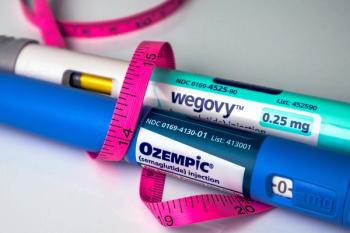
Quality assurance in a post-NECC world
Six steps compounding pharmacies can take to create and maintain a culture of quality assurance
IN MY VIEW
For pharmacies in the compounding business, quality assurance is a constant battle. And a company’s best defense - against problems such as medication errors, contamination, or potency issues - is a good offense. The pharmacy must always strive to create and maintain a culture of quality to ensure proper procedures, regulatory compliance, patient safety and, ultimately, healthy revenue to support the bottom line.
These principles have always been in force, but they have taken on even greater meaning after last fall’s tragedy at the New England Compounding Center, where contaminated vials of methylprednisolone acetate led to a meningitis outbreak that resulted in over 50 deaths, with hundreds more falling seriously ill.
Compounding pharmacies should waste no time in reviewing their quality assurance programs to ensure that they are up-to-date and effective as they take on today’s challenges.
Keys to quality assurance
Here are six examples of how your compounding pharmacy can maximize quality assurance:
- Clean room. Make the clean room the center of your operation. It is common to see clean rooms tucked into a back corner of many pharmacies. However, a clean room can be constructed with large windows and positioned so that it is very visible to customers, yet still isolated against potential contamination. This design maintains a safe, sterile environment and also demonstrates to the public that yours is a transparent organization.
- Compliance officer. Employ a full-time compliance officer, or at least have designated quality assurance pharmacy staff to develop and maintain a comprehensive program that involves inspections, monitoring, measurement, and education.
- Information exchange. Give the person who occupies this important role ample time to carry out the quality assurance mission. That means creating regular opportunities, such as staff meetings held weekly or at least monthly, in which employees can exchange information, review quality assurance and patient or physician communication, present operational workflow reports, and assess and provide solutions.
- Testing and monitoring. Track trends in dosage-form data through integrity testing by an approved laboratory and monitor clean-room procedures to set a baseline for quality - and then make improvements from there.
- Obtain accreditation. Begin the journey to accreditation. In our post-NECC world, physicians and consumers alike are looking for signs that your pharmacy follows higher standards. You can demonstrate another quality achievement with these standards by securing accreditation.
- Have a plan. Create a crisis plan so that resources are at the ready before a major problem arises. The faster you can execute a potential recall, the better. Getting out in front of a quality problem will keep the public safe and will also preserve your reputation.
Spread the word
Once you’ve established or solidified a strong quality assurance program at your compounding pharmacy, it’s important to convey that to your customers, especially in this era of intense regulatory and media scrutiny. They should see the efforts you are taking to keep their medications sterile, maintain drug potency, and ensure patient safety.
Proof of your company’s quality control procedures should not be kept out of sight. Print up a quality control chart and hand it out to the physicians with whom you do business. Show the medical team that your main concern is patient safety.
Take pride in the rigorous steps you take to ensure safe, quality, dependable products.
Ernest P. Gates Jr. is the president of
Pullquote: Have designated quality assurance pharmacy staff to develop and maintain a comprehensive program that involves inspections, monitoring, measurement, and education.
Newsletter
Pharmacy practice is always changing. Stay ahead of the curve with the Drug Topics newsletter and get the latest drug information, industry trends, and patient care tips.




